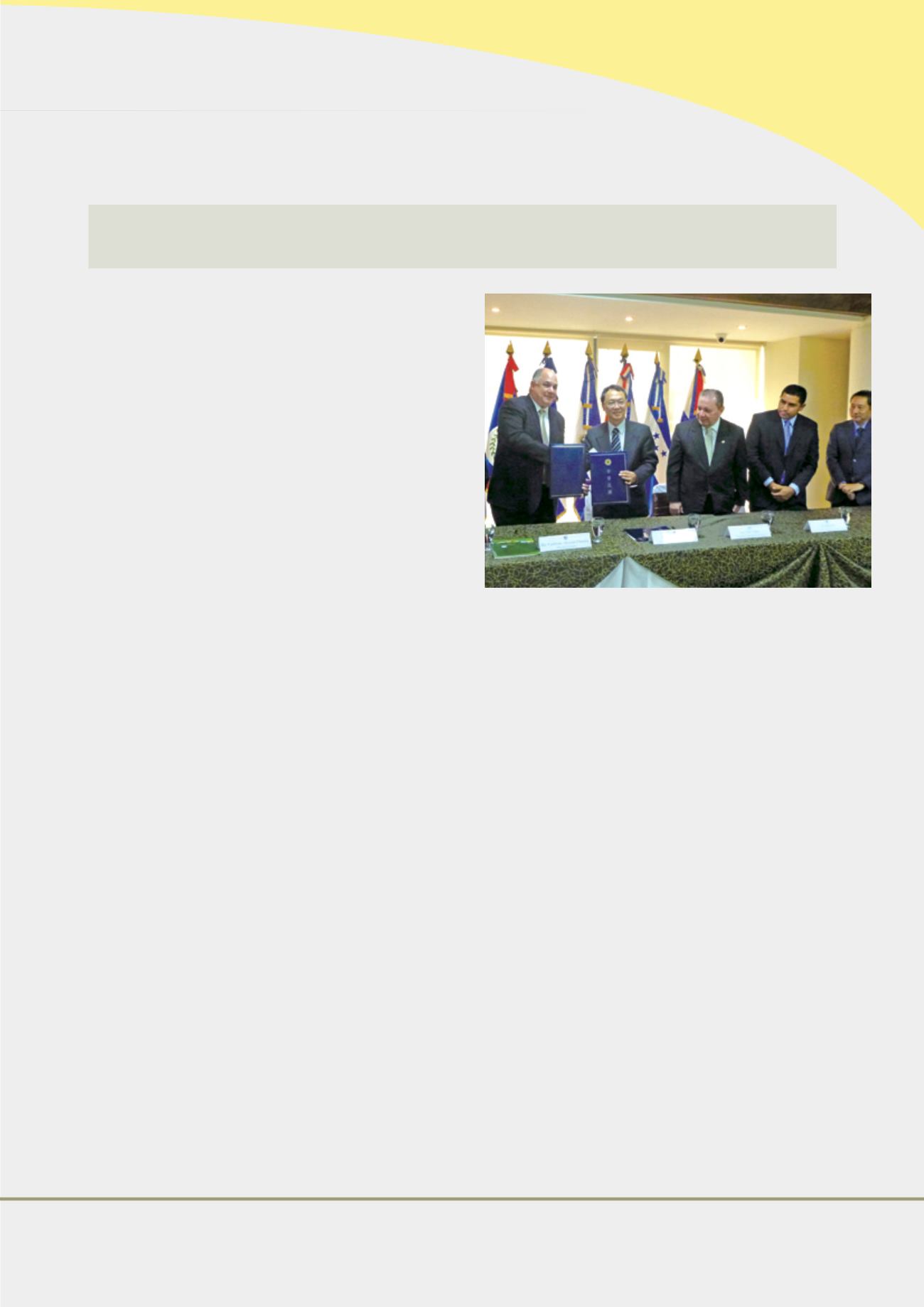
Case Study 3
Strengthening the Control of Huanglongbing (HLB) and the
Implementation of Integrated Pest Management (IPM) in Citrus Project
Huanglongbing (HLB), or citrus greening disease,
is one of the most destructive diseases to affect citrus
fruits. In the last four years, the disease has spread to
a number of the International Regional Organisation for
Plant and Animal Health’s (OIRSA) countries of operation
throughout Central America as well as parts of the
Caribbean. If the disease is not effectively prevented and
treated, it could result in huge losses of production output
in an industry worth an estimated US$1 billion and pose
a grave threat to the region’s citrus industry and private
growers. The disease also threatens the region’s poorest
people who rely on citrus fruits as their primary source of
vitamin C.
The OIRSA approached Taiwanese authorities with
a request for technical assistance because of Taiwan’s
wealth of experience in controlling HLB over the past 60
years through prevention, detection, monitoring, field
trials and nursery-based seedling production. MOFA then
commissioned the TaiwanICDF to handle the project.
Joint Execution According to Project
Implementation Processes
Taiwan’s ambassador to El Salvador and the executive
director of the OIRSA signed a formal agreement on the
five-year project on December 11, 2012. The initiative,
which will be jointly implemented in accordance with
the project cycle and associated processes, has been
designed to emphasize the principle of ownership: OIRSA
teams in each of its countries of operation will work
with relevant government agencies in those countries to
implement the project. Meanwhile, the TaiwanICDF will
focus on capacity building and institutional improvements.
We will dispatch a project manager as well as short- and
long-term experts and consultants to assume overall
responsibility for supervising the project, ensuring its
effectiveness and assisting the OIRSA in resolving any
problems that arise.
Building Capacity in Regional Disease Prevention
And Control
In terms of key practices and projected outcomes, the
project will:
• Assist the OIRSA to establish a seedling nursery and
replace 100 percent of HLB-infected citrus plants with
healthy seedlings throughout beneficiary countries by
project completion.
• Provide training on diagnosing HLB to personnel
throughout beneficiary countries with the goal of
raising diagnostic accuracy by 50 percent by project
completion.
• Expand the use of IPM technology to 25 percent of
citrus growing areas in each beneficiary country.
• Strengthen HLB monitoring and reporting systems in
pest-free countries and/or pest-free areas throughout
the region.
By achieving these objectives, the project will help
the OIRSA build capacity in disease prevention and
treatment in countries already infected with HLB, as well
as introduce mechanisms to prevent the spread of HLB
to two pest-free countries, El Salvador and Panama.
The project will therefore help safeguard the continued
quality, yield and production capacity of the region’s citrus
industry.
Taiwan’s ambassador to El Salvador H.E. Jaime Chen (second from left),
accompanied by TaiwanICDF Secretary General Tao Wen-lung (right), signs
and exchanges agreements with Ing. Guillermo Alvarado Downing (left),
Executive Director of the OIRSA, as part of efforts to help Central American
countries combat Huanglongbing.
41


